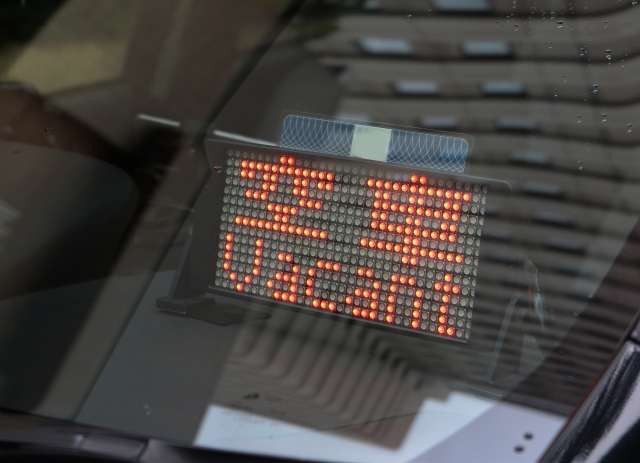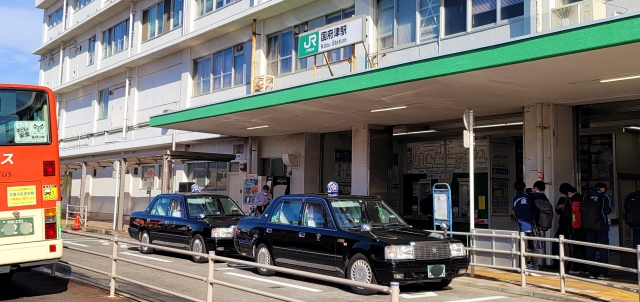Riding a taxi in a new country can be daunting, but when it comes to Japan, the experience is simplified by their excellent service standards.
This guide aims to prepare you for a seamless ride by unraveling the etiquette of riding a taxi in Japan.
Automatic Doors
One of the first things you’ll notice about Japanese taxis is their automatic doors.
They are controlled by the driver, so there’s no need to open or close them yourself. Just stand back and let the door open for you. In fact, trying to do it yourself might surprise the driver!
Understanding Taxi Signs

Understanding the signage on a taxi is crucial for knowing whether it’s available or not.
The red sign lit up in the windshield means the taxi is vacant (空車, kuusha), while a green or yellow sign indicates that the taxi is occupied (賃走, chinsō).
Destination and Route
Once inside, you should tell the driver your destination and if you have a preferred route, don’t hesitate to communicate it.
Most taxi drivers in Japan might not speak fluent English, so it’s a good idea to have the name and address of your destination written in Japanese.
In major cities, taxis are equipped with GPS devices, and drivers can find a location if given a phone number or a map.
Fare and Tips
The cost of a taxi ride is calculated by a meter based on distance and waiting time.
At the end of the ride, you can pay by cash or card; most taxis accept both.
It’s essential to know that tipping isn’t customary in Japan.
The fare on the meter is all you need to pay.
Receipts
If you require a receipt (領収書, ryōshūsho), you can ask the driver by saying “Ryōshūsho onegaishimasu”.
It’s common to get a receipt, especially for business travelers, so don’t hesitate to ask for one.
Smoking Rules
While some taxis allow smoking, most taxis in Japan are non-smoking.
Look for a sticker on the window or ask the driver if you’re unsure.
Handling Lost Items
In case you forget an item in a taxi, you can call the taxi company for assistance.
It’s recommended to take a receipt at the end of your journey.
The receipt has information about the taxi, which will be handy when you contact the taxi company about your lost item.
the Taxi Types

There are various types of taxis in Japan, and the type often determines the price.
Two common types are “small size” (小型, kogata) and “medium to large size” (中大型, chuuooki).
As expected, the latter type tends to be more spacious and, therefore, a bit more expensive.
| Taxi Type | Description |
|---|---|
| Small Size (小型, kogata) | Smaller and less expensive. Ideal for short distances. |
| Medium to Large Size (中大型, chuuooki) | More spacious and a bit more expensive. Better for long-distance travel or large groups. |
Where to Find Taxis
Taxis are available throughout Japan, especially in urban areas.
You can easily hail a taxi on the street or find them at taxi stands around train stations, shopping centers, and popular tourist sites.
In some rural areas, you might need to call a taxi service in advance.
Additional Tips
- Try to avoid rush hours (7-9 AM and 5-7 PM) if possible, as traffic can affect your travel time and cost.
- Some taxis offer a flat-rate fare to certain destinations, so don’t hesitate to ask the driver.
- Some taxi companies provide smartphone apps for hailing a taxi, which can be convenient for foreign tourists.
Conclusion
Taxis in Japan are known for their comfort, cleanliness, and the courtesy of their drivers.
Understanding the local etiquette not only enhances your travel experience but also bridges cultural differences.
So next time you’re navigating the streets of Tokyo, Osaka, or any other Japanese city, take these tips to heart and enjoy your journey!



comment